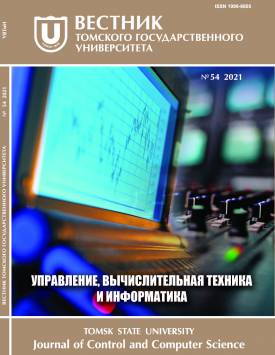Using the mid-frequency range of acoustic waves to transmit information in shallow waters
Human research of the underwater space of the World's Oceans is impossible without effective underwater communication tools. There is a need for reliable communication with various types of objects: submarines, drilling equipment, small and medium-sized autonomous and remotely controlled unmanned underwater vehicles (ROV and AUV). Small-sized ROV and AUV as usual work in shallow water (typical depth is in range from a few meters to100 m) and at a short distance from the operator's place or base (up to 500 m). In these conditions the medium acoustic frequencies are suitable to build high-speed communication links. The main features of medium frequency link in range 48-64 kHz are considered in the paper. A most important features of hydroacoustic channels in shallow waters are the multi-path propagation and as a result long duration of the channel impulse response, the nonstationarity of its characteristics and Doppler shift of the transmitted signals. The main sources of nonstationarity are motion of the water surface caused by wind, linear movements of the transmitter and receiver installed on mobile objects, sea currents. This leads to a change of the channel impulse response in time and to a Doppler shift of the signal spectrum on the receiver side. Hydroacoustic channels are characterized by a variety of noise sources of biogenic, technogenic, atmospheric nature. In the considered middle frequency range, the most powerful are the noise caused by the movement of the water shallow due to wind in the atmosphere and thermal noise. The open source software Acoustic Channel Simulator was used to simulate a non-stationary hydroacoustic channel. A channel with nominal parameters (parameters in the absence of movement) typical for the task of communication with ROV and AUV in the Black Sea is considered: the value of the absorption coefficient per kilometer for the central frequency of the channel (56 kHz) and conditions typical for the Black Sea [3] (pH = 8, temperature +10 ° C, salinity 17 %o) is 9.47 dB/km. For the channel considered, the maximum transmission rate obtained using Shannon-Nyquist theorem is 74.4 kbit/s. But in practice it is hard to achieve the transmission rate close to this value, because of channel features, which lead to inter symbol interference. An effective way to mitigate inter symbol interference is the use of multicarrier modulation techniques, the most used of which today is orthogonal frequency division multiplexing (OFDM). To estimate the transmission rate over the considered hydroacoustic channel, a model of an OFDM system with simple input and simple output (SISO) was considered. The two different demodulation techniques are investigated. It is Fourier transform with channel estimation using least mean squares (LMS) algorithm and P-FFT differential coherent demodulation technique. The subchannels signals are QPSK modulated. The simulation results show that the bit error rate is about E10-2 (without forward error correction) for both considered demodulation schemes, while the overall transmission rate is 28 kbps.
Keywords
communication systems modeling, mathematical modeling, data transmission in shallow waters, non-stationary channels, hydroacoustic communication channelsAuthors
| Name | Organization | |
| Dushin Sergey V. | Institute of Control Science of RAS | s.dushin@inbox.ru |
| Aleshin Viktor S. | Moscow Technical University of Communication and Informatics | abc082012@yandex.ru |
| Shavrin Sergey S. | Moscow Technical University of Communication and Informatics | sss@mtuci.ru |
| Farkhadov Mais P. | Institute of Control Science of RAS | mais@ipu.ru |
| Kurov Igor Yu. | Institute of Control Science of RAS | kurov.igor@gmail.com |
References

Using the mid-frequency range of acoustic waves to transmit information in shallow waters | Vestnik Tomskogo gosudarstvennogo universiteta. Upravlenie, vychislitelnaja tehnika i informatika – Tomsk State University Journal of Control and Computer Science. 2021. № 54. DOI: 10.17223/19988605/54/5
